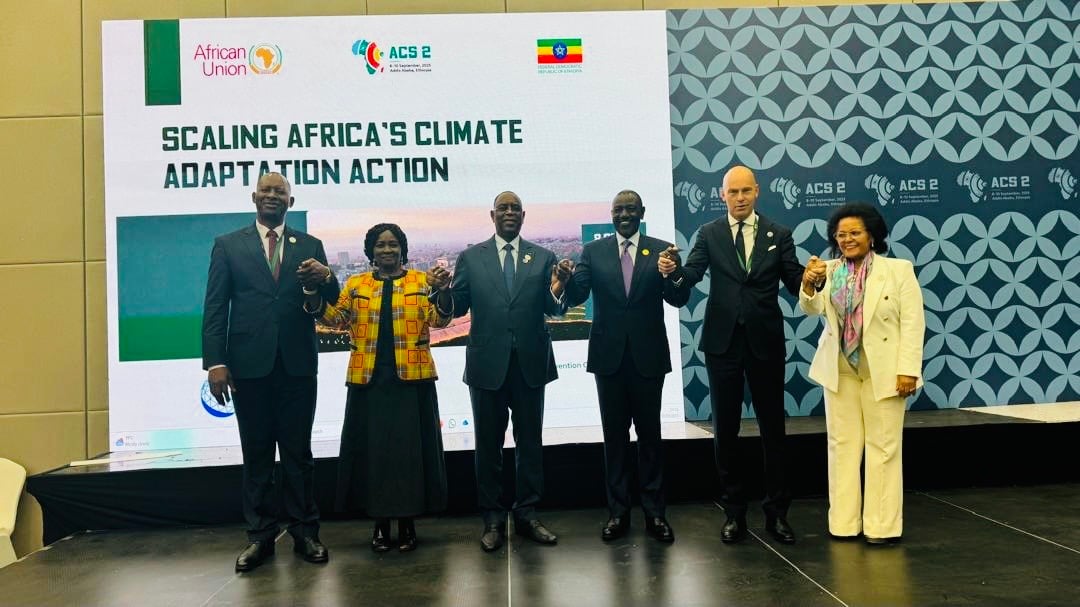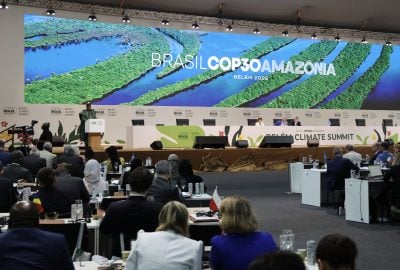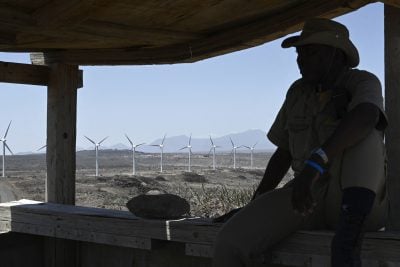This article was produced with the support of AUDA NEPAD
Africa’s climate story is changing. For too long, the continent has been cast as the frontline victim of climate change—battered by droughts, floods, cyclones and rising seas. But in Addis Ababa, at the second Africa Climate Change Week, a new narrative took shape. Here, African leaders, institutions and global partners launched Phase Two of the Africa Adaptation Acceleration Program (AAAP), a flagship initiative that is already mobilising $25 billion of adaptation investments across 40 countries. It was a moment that underscored Africa’s resolve to move from being a recipient of climate aid to becoming an architect of resilient futures.
Kenya’s President William Ruto captured the urgency of the moment. Reaffirming his government’s commitment to climate adaptation and resource mobilisation, he called for greater ambition and a wider coalition of actors, including private sector players and financial institutions. For Ruto, climate adaptation is not a peripheral concern but a national and continental priority—one that requires innovation, scale, and speed.
If Ruto brought the urgency, AUDA-NEPAD’s chief executive Nardos Bekele-Thomas brought the institutional weight. As the newly appointed member of the AAAP advisory board, she pledged to mobilise the full capabilities of Africa’s Union Development Agency. “We will mobilise our networks, leverage our partnerships, and ensure this programme reaches the 600 million Africans whose livelihoods depend on climate-sensitive sectors,” she told delegates. For Bekele-Thomas, the AAAP is not simply another climate project. It is Africa’s decisive answer to the climate crisis—homegrown solutions designed for global transformation.
What sets AUDA-NEPAD apart is its ability to translate grand visions into tangible results. As the implementing arm of the African Union, it has a long track record of moving continental priorities from policy documents to real-world outcomes. In climate adaptation, that means helping smallholder farmers double their yields through climate-smart agriculture, supporting coastal regions to build resilience against storms, and embedding sustainability into infrastructure planning. The agency’s deeper involvement in AAAP Phase Two reflects an evolution from pilot projects to large-scale transformation. The transition from vision to delivery is the measure by which adaptation will ultimately be judged, and AUDA-NEPAD’s institutional presence gives the programme credibility and staying power.
Africa’s leadership on climate adaptation is not only symbolic. It is being physically embedded in the institutions driving global action. The Global Center on Adaptation (GCA) has announced that the headquarters of its African operations will be based in Nairobi. This decision places Kenya—and by extension Africa—at the heart of global efforts to design, test, and export adaptation models. By anchoring adaptation leadership on African soil, the message is unambiguous: Africa is not just a stakeholder in global solutions; it is a driver of them. The Nairobi hub ensures that African expertise, priorities and innovations shape the global adaptation agenda rather than being peripheral to it. It also positions the continent to act as a laboratory of resilience, where climate solutions are developed in contexts of high vulnerability and rapid change before being scaled globally.
Reframing the narrative
Perhaps the most important shift emerging from Addis Ababa is a rethinking of what adaptation means. Too often, adaptation has been framed as a cost, a burden, or a humanitarian necessity. Africa’s leaders are challenging that framing, insisting instead that adaptation is an investment in prosperity. The evidence is compelling. Every dollar spent on resilience saves up to six in disaster response. Climate-smart agriculture boosts yields, strengthens food security, and creates employment. Investments in resilient infrastructure reduce the costs of climate shocks, keep supply chains intact, and foster investor confidence.
Adaptation, in this telling, is not charity—it is sound economics. Crucially, adaptation is aligned with Africa’s long-term development vision under Agenda 2063. By integrating climate resilience with goals such as industrialisation, regional integration, and job creation, African leaders are ensuring that adaptation is not a sideline project but a central pillar of economic transformation.
The Addis Ababa meeting was also a rehearsal for bigger stages to come. Africa is preparing for the 80th United Nations General Assembly and COP30 in Brazil, where the continent’s unified voice will be critical. The message is clear: Africa is not a region in need of rescue, but a region of innovation, demanding partnership rather than pity. This repositioning is not rhetorical. It is reflected in the continent’s institutions, from the African Union and AUDA-NEPAD to the African Development Bank, which are aligning their efforts to push adaptation up the global agenda. By forging a unified front, Africa is better able to advocate for the financing, partnerships, and political support needed to accelerate adaptation.
Closing the financing gap
Yet ambition cannot obscure the scale of the challenge. Africa needs an estimated $2.8 trillion in adaptation financing by 2030. Current flows fall far short of that figure. The financing gap remains the biggest obstacle to Africa’s adaptation revolution. But what is emerging is not a sense of paralysis, but a determination to innovate. Blended finance, risk-sharing mechanisms, and new instruments to crowd in private capital are all on the table.
African leaders and institutions are increasingly vocal about the need to redesign global financial systems to make adaptation investments bankable and scalable. The focus is shifting from pleading for aid to structuring opportunities that attract investment, aligning climate action with financial returns.
The most striking feature of Addis Ababa was the sense of momentum. From Bekele-Thomas’s appointment to the Nairobi hub and the scaling of AAAP, there is a growing confidence that Africa can lead the global adaptation revolution. That momentum carries with it responsibility—to deliver results, to maintain unity, and to ensure that Africa’s most vulnerable communities see the benefits. Professor Patrick Verkooijen, CEO of the Global Center on Adaptation, captured the mood when he told delegates: “The time for incremental change has passed. The era of African-led transformation begins now.” His words reflect both the urgency of climate action and the opportunity for Africa to seize the initiative.
The road ahead is both daunting and promising. The challenges are vast: a financing gap of trillions, increasing climate shocks, and the need to balance adaptation with urgent mitigation efforts. Yet Africa’s pivot from needs to leadership signals a profound change in global climate politics. If the AAAP succeeds in mobilising and delivering large-scale adaptation across 40 countries, it will not only strengthen Africa’s resilience but also provide models for the world. If the Nairobi hub becomes a true engine of innovation, it will ensure that Africa’s ideas shape global practice. If institutions like AUDA-NEPAD sustain their focus on delivery, adaptation will become embedded in the continent’s economic transformation.
Africa is no longer waiting to be saved. It is taking charge of its future, redefining adaptation as opportunity, and challenging the world to catch up. In doing so, it is not just adapting—it is leading.

 Sign in with Google
Sign in with Google 



